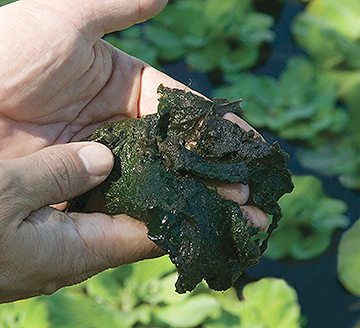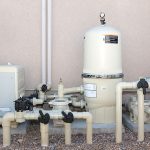In the world of science and biology, algae play a crucial role in the ecosystem. They are tiny organisms that can be found in various environments, including ponds. Collecting algae from a pond can be a fascinating and educational experience. In this guide, we will explore the steps involved in collecting algae from a pond efficiently and safely.
1. Prepare the Necessary Equipment
Before heading to the pond to collect algae, it’s essential to gather all the necessary equipment. You will need:
- A clean container to store the collected algae
- A pond water sample container
- A microscope (optional but recommended for further examination)
- A pair of gloves to protect your hands
- A small net or algae scraper
2. Choose the Right Pond
When selecting a pond to collect algae, it’s crucial to choose a location that is relatively undisturbed and free from pollutants. Look for ponds with clear water and visible algae growth. Avoid ponds near industrial areas or locations with heavy pesticide use.

Credit: www.gardengatemagazine.com
3. Time of Day
It is best to collect algae during the day when sunlight is available. Algae perform photosynthesis, so collecting them during daylight hours ensures that they are actively growing and reproducing.
4. Collecting the Algae
Once you have found a suitable pond, it’s time to collect the algae. Use a small net or algae scraper to gently skim the surface of the water. Be careful not to disturb the sediment at the bottom of the pond, as this can disrupt the ecosystem.
5. Store the Algae Properly
After collecting the algae, transfer them into a clean container filled with pond water. It’s essential to keep the algae in their natural habitat to maintain their health and condition. Seal the container tightly to prevent leakage during transportation.
6. Transporting the Algae
If you need to transport the algae to a different location for further examination, make sure to secure the container properly to prevent spills. Keep the algae away from direct sunlight and extreme temperatures during transportation.
7. Examination Under a Microscope
For a more in-depth analysis of the collected algae, use a microscope. Place a small sample of algae on a glass slide and observe them under the microscope. You can identify different species of algae and study their structures and characteristics.
8. Document Your Findings
Make notes of the species of algae you have collected, their color, shape, and any other distinctive features. Take photos through the microscope if possible to create a visual record of your findings.

Credit: www.youtube.com
9. Return the Algae to the Pond
After you have finished examining the algae, it’s essential to return them to the pond where you collected them. Maintaining the balance of the ecosystem is crucial, and returning the algae ensures that they continue to contribute to the pond’s ecosystem.
10. Safety Precautions
While collecting algae from a pond can be an exciting activity, it’s essential to take some safety precautions:
- Wear gloves to protect your hands from any potential irritants in the water.
- Avoid ingesting pond water or coming into contact with your mouth or eyes while collecting algae.
- Be cautious of your surroundings and watch out for any wildlife that may pose a threat.
Conclusion
Collecting algae from a pond can be a rewarding experience that offers valuable insights into the world of aquatic biology. By following the steps outlined in this guide and taking necessary safety precautions, you can safely and effectively collect algae from a pond for further study and observation.




